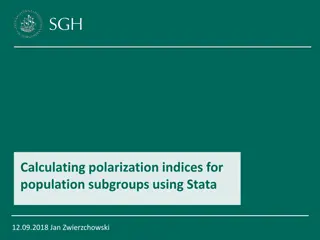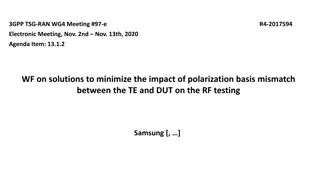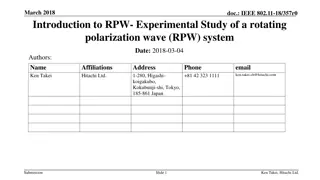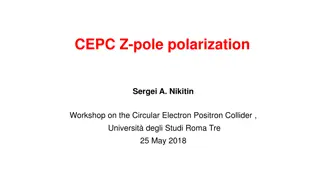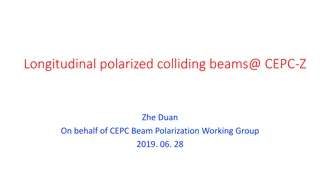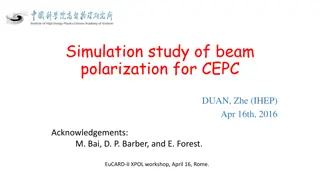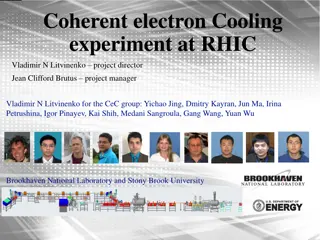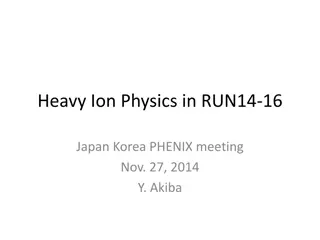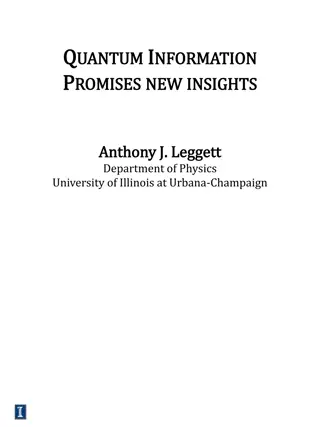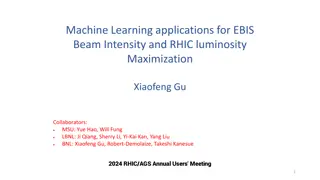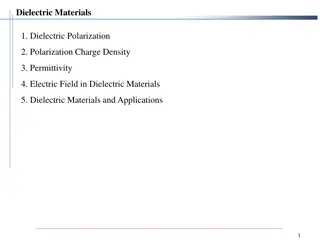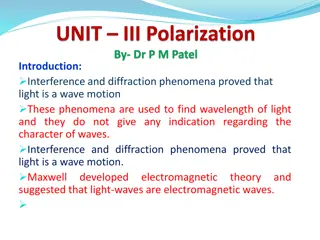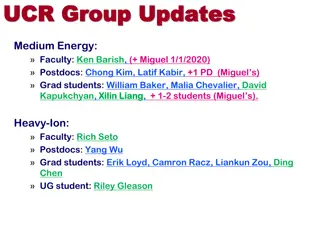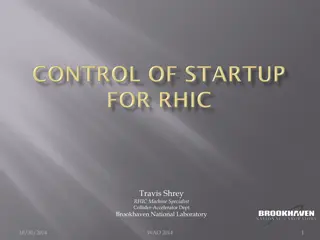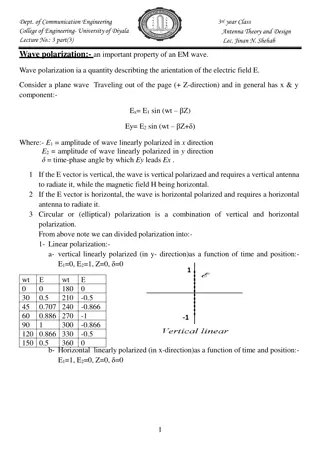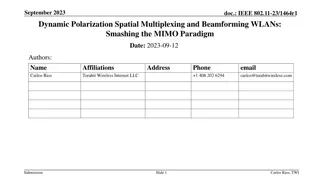Insights on Polarization Loss in RHIC Ramp Studies
Detailed analysis of polarization loss during RHIC ramp studies, including driver identification, efficiency measurements, simulation results, and impact of imperfections and coupling effects. Investigations into resonances, transmission efficiency, and harmonic bump imperfections shed light on the underlying causes of decreased efficiency.
Download Presentation

Please find below an Image/Link to download the presentation.
The content on the website is provided AS IS for your information and personal use only. It may not be sold, licensed, or shared on other websites without obtaining consent from the author.If you encounter any issues during the download, it is possible that the publisher has removed the file from their server.
You are allowed to download the files provided on this website for personal or commercial use, subject to the condition that they are used lawfully. All files are the property of their respective owners.
The content on the website is provided AS IS for your information and personal use only. It may not be sold, licensed, or shared on other websites without obtaining consent from the author.
E N D
Presentation Transcript
Polarization: Run 17 and Beyond V. Ranjbar
APEX Studies During the final days of the run Al, Haxing and I were able to perform a very significant study of polarization loss on the RHIC ramp. This was done using a slow factor of x10 and thus permitted time for CNI measurements along the ramp. However the machine seemed to be in a degraded state with efficiencies ~60 - 70%
This Ramp measurement in the Blue Lattice confirms our general suspicion that losses if they occur are due to crossing one of the three strong resonances For this particular Ramp we measure a 70% relative transmission efficiency. This is much lower than the average 92% efficiency we had throughout the run. So unfortunately this is not a good characterization of a typical ramp. Break down estimate of losses are: 260: ~8% loss 381: ~10% loss 422: ~14% loss
What Does Simulation Say? Losses for 2 mm-mrad rms beam Ggamma Old Lattice Blue (loss) New Lattice Blue (loss) Old Lattice Yellow (loss) New Lattice Yellow (loss) 260 < 0.1% < 0.1% < 0.1% < 0.1% 381 < 0.1% < 0.1% 0.58% < 0.1% 422 1.4% 0.13 % 0.66% <0.1%
Orbit or Coupling? In the absence of orbit or coupling effects we are entitled to 98% transmission on the ramp for an emittance of 2 mm-mrad rms. This is true for the old Ramp and even more for the new ramp. We must conclude that Imperfection or Coupling effects are what is driving our losses in excess of 98%. There is strong circumstantial evidence for this: The fact that our lattice went from 92% to 70% efficiency without any change in the applied base lattice Large Spin tilt suggests a very strong imperfection
Application of Cos(3*theta) Harmonic Bump Imperfection Resonance Ggam=423 Ggam=381 Ggam=261
Result was that ramp efficiency was dropped to 48% a from 70%. (20% drop). The breakdown of the losses are: 260: ~ 28% (additional 20% with ~ 0.17 Imperfection) 381: ~ 12% (additional 2% with ~ 0.23 Imperfection) 422: ~ 22% (additional 8% with ~ 0.25 Imperfection) Losses not necessarily proportional to change in Imperfection
Anomalous SpinTilt Energy scans of the projection of average spin tilt into horizontal plane at Injection (top) and at store (bottom) in Blue ring. We compared response to simple model with snakes at settings based on model value for Iin=100 and Iout=323 amps and with detuning of snakes and a strong imperfection source. In our model using a singular imperfection at Ggama=487 of 0.2 could work.
Effect of Imperfections Preliminary studies of simple 2 resonance models show losses at 2 mm-mrad rms are as follows: 0.2 6.6% 0.15 0.6% 0.1 0.08% This needs to be done using direct tracking with constructed Imperfection bumps still However to match our observed losses we probably need Imperfections ~ 0.2 which is consistent with the spin tilt study.
Mining Spin Tilt data? Along with the ramp measurements we have spin tilt measurements on the ramp with and without the bump I have a vague hope that by matching our spin tilt values along the ramp we could back out a plausible Imperfection resonance structure. However this data might be too noisy
Conclusion and Future Prospects With Emittances well controlled down to 2 mm-mrad any losses above 2% are probably due to Imperfections or Coupling effects. I strongly suspect the later To make progress on polarization: I would advise that we make a heroic effort to enhance our ability to control the orbit relative to the quads in the lattice. Consider methods like beam based alignment except for all quads? Spend time using artificial Imperfection bumps to knock out Imperfections This is time consuming though


